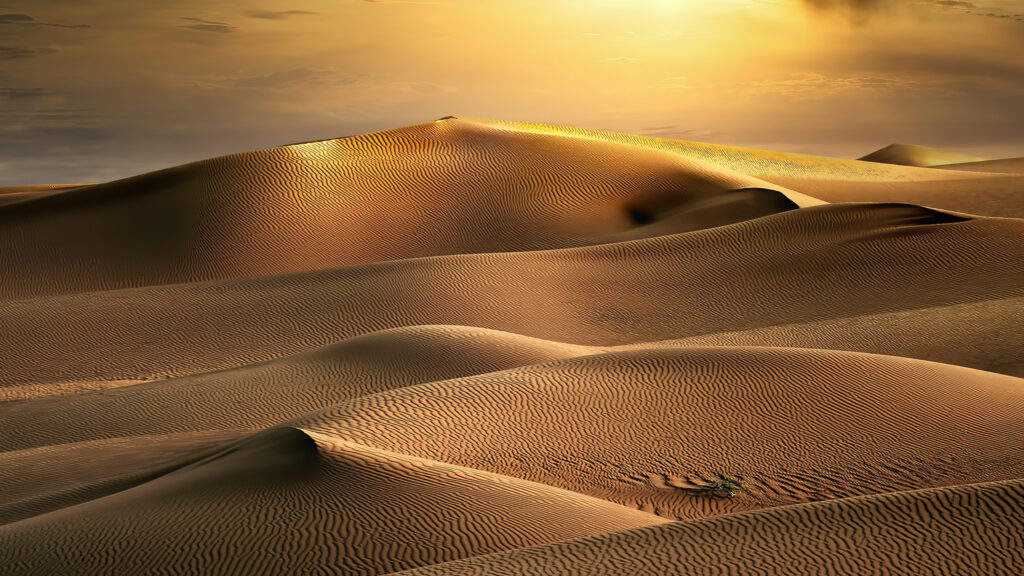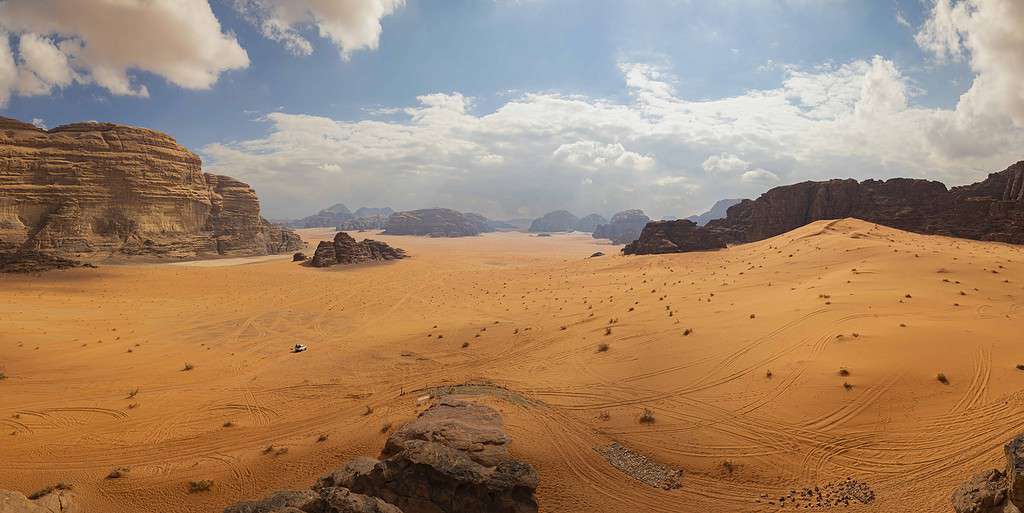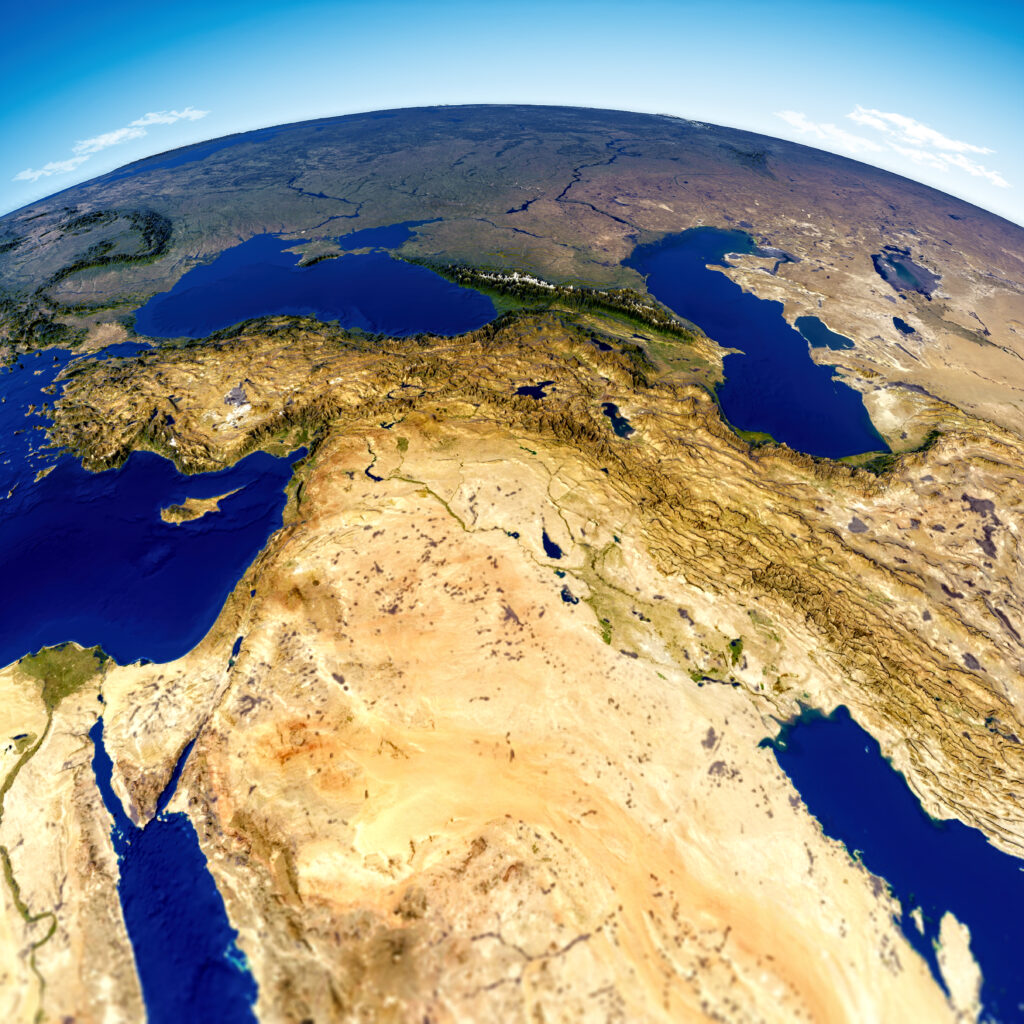The world’s largest peninsula is the Arabian Peninsula. It is situated in the southwest of Asia and is also called the Isle of the Arabs or Jazirat-Al-Arab. It’s bordered by significant waterways and gulfs that act as crucial shipping channels, linking the Middle East with other global economies.
Over 1,200,000 square miles (1,250,000 to be exact) make up the entire Arabian Peninsula. The Gulf of Aden and the Red Sea encircle it on its southwest side. Although the eastern shore is bounded by the Persian and Oman Gulfs, the southeast coast borders the Arabian Sea.
How Old is the World’s Largest Peninsula?
The Arabian Peninsula has a geological history that dates back 100 million years. The Red Sea Rift, which formed the Arabian continent and dates back around 24 and 56 million years prior, accelerated the process. Geographically speaking, the peninsula is also known as the Arabian subcontinent because it is located on the Arabian tectonic plate.
This plate is separating away from the continent of Africa and migrating in the direction of Asia. The Zagros Mountains specifically are being pressed into the Eurasian mainland. The area might start to experience earthquake activity in about 100 years.
Many extinct volcanoes with an 8,000-year gap in between eruptions can be found on the peninsula. But Harrahs, also known as black mounds, a distinctive feature of Western Arabia, were created by hardened lava. The peninsula is covered in uncovered sedimentary and igneous rocks.
The newest formations line the Persian Gulf, while the initial ones are located in the Nubian shield, near the coast of the Red Sea. The Arabian mountain ranges and Oman are covered by the Semail Ophiolite. The sedimentary deposits are made up of sandstone, limestone, and shale.
These are from the Paleozoic era, dating back 400 to 550 million years. They are located in the Arabian shield. There are signs of ancient oceans and water that have been retained in many of the eastern sections of the peninsula.

The world’s largest peninsula is the Arabian Peninsula, which covers 1,250,000 square miles.
©iStock.com/AFZALKHAN M
What’s the Climate Around a Peninsula?
The Arabian Peninsula experiences intense heat, with summertime highs of up to 131 degrees Fahrenheit. The region is divided as the Tropic of Cancer travels through Saudi Arabia’s Medina.
While southern mountainous areas and coastlines battle with high amounts of humidity, inland sections are more likely to have hot, dry weather. These locations can be covered with fog and dew in the early morning hours. Most regions experience good weather and gentle breezes during the spring and fall seasons.
Except for the northern high parts and the mountainous zones, which occasionally get snowfall, winters are moderate. Winds carrying water out of the Indian Ocean evaporate moisture before reaching the peninsula, resulting in little rain.
Seldom do severe downpours with hail and flash floods occur in desert regions. The peninsula frequently experiences droughts, resulting in water becoming a valuable resource. The southern region of the Arabian Peninsula experiences brief, generous monsoon months with higher precipitation than other regions.
Yemen and the northern parts receive rain due to winds coming from the Mediterranean Sea toward the Persian Gulf.

The world’s largest peninsula experiences intense heat, with summers reaching up to 131 degrees Fahrenheit.
©iStock.com/Matthew Starling
The Peninsula’s Surroundings
Sand dunes that are constantly moving cover a significant portion of Arabia. The Arabian Peninsula really contains the second-largest desert in the world, after the famous Sahara Desert. There are many Bedouin tribes there that still live the traditional way of life in the area as well. It is over 899,618 square miles in size, making it three times bigger than Spain.
The vast Arabian desert includes the Empty Quarter, sometimes known as the Rub’ al Khali. It’s over 620 miles long and is renowned for its 820-foot-high sand dunes. Reddish-orange sand is mixed with stones and gypsum on the ground. Salt flats that are brackish are located in the Umm al Salim area on the eastern end.
It is interesting to note that despite the sand being blown away by powerful winds, the sand dunes in Empty Quarter maintain their shape. This is because the sabkhas, or surrounding mudflats, which provide moisture to the foundation of these dunes, are close.
The beautiful desert has appeared in numerous films, including the 2015 Star Wars. It is also a popular tourism site where visitors partake in desert safaris and campouts at night. The Al Murrah is the largest tribe to live in the Rub’ al Khali.
They reside in tents between the Al-Ahsa and Najran regions. The Banu Hamdan and the Bani Yas are two other tribes in the area. These communities are linked by roads to the adjacent towns and water sources.

The world’s largest peninsula can be seen from space.
©iStock.com/Naeblys
Beauty Near the World’s Largest Peninsula
The most prevalent trees you will find on the peninsula are date palms and coconut palms. Both Medina and Mecca, two Muslim holy towns, export premium dates. Agriculture cannot be practiced on a large scale due to water constraints and untouchable soil. Nonetheless, some locations are ideally suited to cultivating grains like sorghum, millet, and wheat.
Fruits, especially succulent ones such as delicious pomegranates and cantaloupe, are grown close to the peninsula because Arabians prefer them to vegetables. Curiously, figs, peaches, grapes, pears, and almonds were also produced in Al-Buraimi at the same time that mango production began.
In Yemen, coffee is produced on a limited scale, but tobacco is planted close to Hadhramaut Beach. Southern regions are home to natural colorants like violet and medicinal botanicals. Locally, cacti and mimosa plants are used to harvest resin. Blooming plants are uncommon, but Taif’s roses are a breathtaking sight.
Bedouins possess several goats, sheep, and horses in addition to using camels to go through the rough terrain. Falcons and salukis are used to hunt deer, bunnies, and other smaller to medium critters. The desert is home to wolves, foxes, jackals, baboons, cobras, reptiles, and scorpions. Coastal locations are home to pelicans, pigeons, flamingos, cuckoos, and other birds.
The photo featured at the top of this post is © iStock.com/titoOnz
Thank you for reading! Have some feedback for us? Contact the AZ Animals editorial team.






